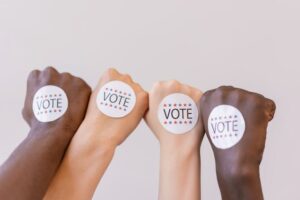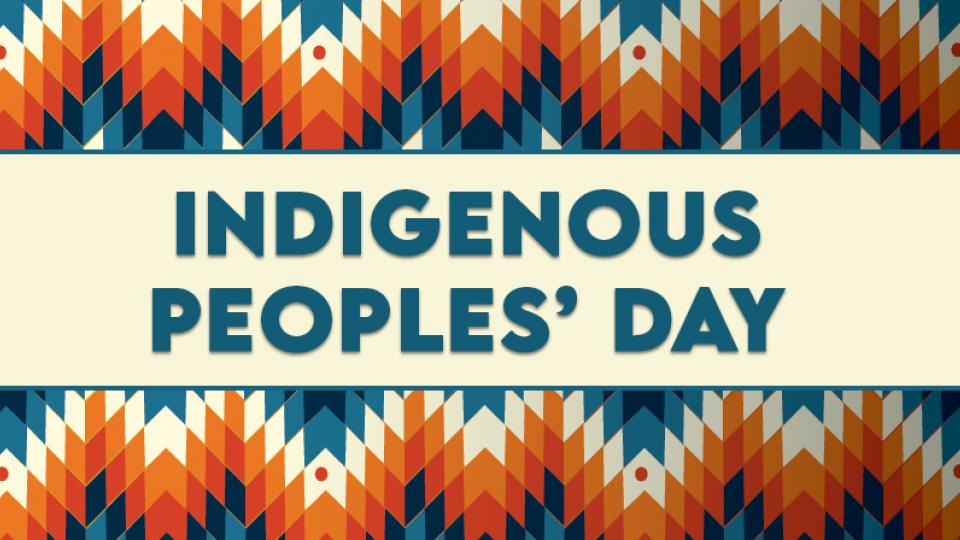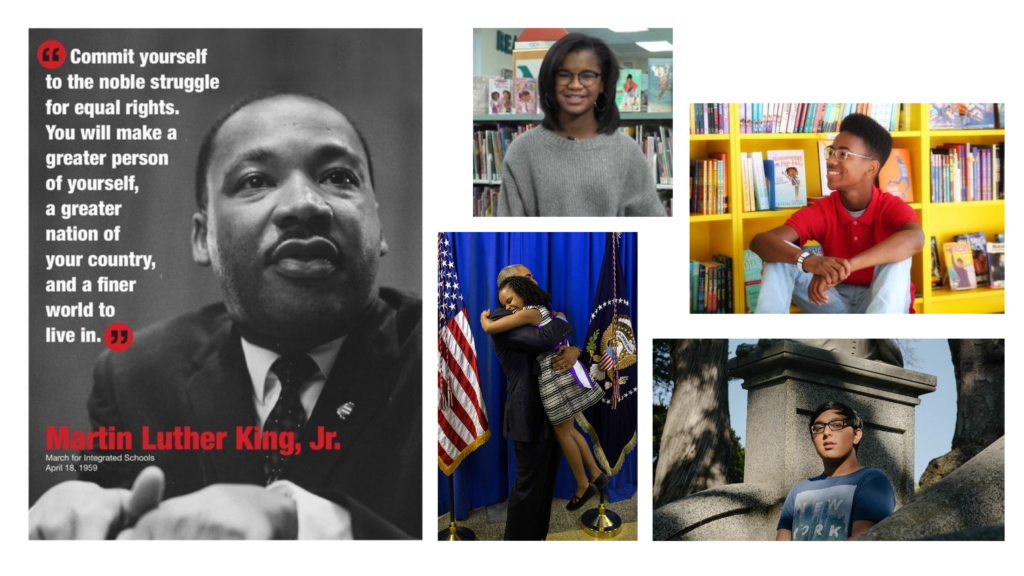
Blog


Equity Considerations for Cellphone Policies
Reading Time: 6 minutes
Many school districts already have cellphone policies but, with pressure building from governors and state legislators seeking to ban cellphones in PK-12 schools, these policies are being revisited, revised, or replaced.
Centering equity in cellphone policy conversations means naming the salience of social identities to how policies are created, implemented, and experienced by different stakeholders. It requires considering possible unintended outcomes that create new or exacerbate existing inequities for some student populations.
How One District Centered Social Identities In Their Revised Cellphone Policy
The Iowa City Community School District (ICCSD) recently revised its cellphone policy. ICCSD enrolls 14,000 students and is located in a midwestern university town. The district had existing cellphone policies that were largely implemented at the discretion of building leaders and classroom teachers. This fall, the Iowa Governor said she will propose “legislation that would ban cellphones in Iowa schools” (The Des Moines Register). ICCSD convened a working group and surveyed parents and teachers as they proactively reconsidered their existing policy.
As the ICCSD began to revisit its cellphone policy, the district was intentional in naming inequities that educators and staff have struggled to overcome. The district considered how a revised cellphone policy might further contribute to such inequities. For example, the district has a persistent pattern of disproportionality in discipline, in particular the over-disciplining of Black students around subjective disciplinary measures like defiance, disrespect, and insubordination (The Press-Citizen, 2021). The district was concerned that a more restrictive cellphone policy would create more opportunities for subjective disciplinary decisions that would complicate their ongoing effort to end disproportionality in discipline. Thus, a key component of the ICCSD revised cellphone policy is that it is not a part of the district’s discipline policy. The revised cellphone policy includes consequences, such as student’s cellphone loss for the day, calls to parents/caregivers, and individualized cellphone use plans. Still, students are not at risk of detention, suspension, or expulsion if they violate the revised cellphone policy. While students will need to go to the office to retrieve a confiscated cellphone at the end of the day, these visits “will not be recorded as ‘Office Disciplinary Referrals’” (The Press-Citizen, 2024).
In addition to being responsive to the district pattern of over-disciplining Black students, the revised cellphone policy reflects awareness of research demonstrating that Black and Latino students receive fewer warnings from teachers before facing a consequence (University of IL). The revised cellphone policy directs teachers to issue one warning to all students at the beginning of class, “Your devices should be secured” (The Press-Citizen, 2024). The next step is the confiscation of the cellphone. Teachers do not confiscate the phones themselves. They send an electronic notice to the administrative office. Teachers and students are able to stay engaged in learning as an administrative staff member comes to retrieve the phone from the student who violated the policy.
The district also considered other demographic considerations, including age. The middle school cellphone policy is more restrictive than the high school. Middle school students can use their phones during passing and lunch while high school students can use their phones during passing, lunch, and study halls.
In discussing equity implications of limiting access to cellphones, the district considered English Speakers of Other Language (ESOL) students who, at times, use their cellphones to translate for themselves or who provide translation for family members throughout the day as well as special education students who use their cellphone as a learning support. The district also considered ability status and students who use apps to track health markers. As a result, the policy allows for student exemptions when a student’s IEPs and 504 plans indicate a cellphone can support student learning or manage student health needs.
The Equity Considerations in Cellphone Policy Evaluation
District leadership announced in a public meeting that it will collect data about the impact of their revised cellphone policy. The district practice is to disaggregate data to identify inequities. This is vital to identifying whether implementing this policy is creating inequities that undermine any subgroup’s educational experiences. Long-documented inequities, such as the increased surveillance and over-disciplining of Black and Latino students, suggest that Black and Latino students might have their cellphones confiscated at higher rates than students with other racial identities. Even if cellphone confiscation does not count as a disciplinary infraction, it does involve an interaction that pulls the student out of instruction and can contribute to negative school experiences, especially if students feel that a subgroup is unfairly targeted in how educators are implementing the policy.
Simply collecting data on whose phones have been temporarily confiscated and how often will not yield a complete picture of the policy’s equity implications. Students must have an opportunity to share how the policy impacts them beyond mere phone confiscation. It is imperative that districts be intentional in creating a space for students to share moments in which they needed but could not access social support on their cellphone. Districts need to invite student feedback about how lack of access to phones might have prevented them from accessing mental health supports and learning supports.
Centering Equity In Cellphone Policies
Asking key questions throughout the policy process can help districts center equity in the creation, revision, implementation, and evaluation of a cellphone policy. The goal is to ensure the policy does not exacerbate existing inequities or create new inequities.
The table below offers some examples of questions that might help a district center equity in their cellphone policies. While not an exhaustive list, it does demonstrate the importance of centering the salience of social identity throughout the policy process.
Districts might not get it right the first time. Still, with continued data collection and revision, including refining the policy in response to student and family/caregiver experiences, districts can prevent their cellphone policies from exacerbating existing inequities or creating new ones.
Equity Considerations in Cellphone Policies |
|
| Identifying District Inequities
The first step is to ensure policy writers understand the current inequities in the district, so they can identify potential ways their work can contribute to existing inequities or create new ones. |
|
| Purpose
This is an opportunity to name any beliefs, biased perspectives, or deficit narratives about particular student populations that underlie the call for the cellphone policy. |
|
| Priorities
Districts should be intentional in naming whose voices must be included in policy discussions to fulfill the district’s responsibility to equitably serve all stakeholders and populations. |
|
| Equitable Implementation
Equitable policy implementation requires multiple-way communication and policy education plan so all stakeholders and populations can work together to enact and refine the policy. |
|
| Equity in Evaluation
Beyond determining if the policy is meeting its intended outcomes, evaluating the equity implications of a cellphone policy requires districts to proactively search for ways that some stakeholders or populations are being harmed by the policy or disproportionately impacted by it. |
|

Cellphone Bans: A Trend or a Call for Integrated Solutions
Reading Time: 4 minutes
Over the past few years, a significant number of schools across the United States have implemented policies that restrict or outright ban cellphone use. As of 2020, around 77% of schools had some form of cellphone ban for non-academic purposes (Harvard Gazette). This trend isn’t limited to the U.S.; countries like France and China have also adopted bans for younger students to minimize distractions and focus on education.
However, the conversation around cellphone bans also intersects with issues of racial, cultural, and socioeconomic equity. Students from marginalized communities often rely on their phones for social support and an important sense of connection that they do not experience in school (Harvard Gazette).
Why Ban Cellphones – Enhancing Focus on Learning
Recent studies have highlighted the negative impact of smartphone use on the concentration and academic performance of school-aged children in the United States. The 2022 Program for International Student Assessment (PISA) reported that approximately two-thirds of U.S. students are distracted by digital devices during class, with 54% also distracted by peers using these devices. This distraction correlates with lower academic performance, as students who reported being distracted scored 15 points lower in mathematics compared to those who were not distracted (EducationWeek 2023). This suggests that even without active use, smartphones can occupy limited cognitive resources, thereby decreasing focus and learning capabilities.
Teachers also see this negative impact. According to a 2023 Pew Research Center survey conducted, found that one-third of public K-12 teachers consider student distractions from cellphones a major problem in their classrooms. This concern is higher among high school teachers, with 72% identifying it as a significant issue. A 2024 survey by the National Education Association (NEA) revealed that 90% of educators support policies prohibiting the use of cellphones during instructional time, citing distractions and disruptions to learning. By banning cellphones, schools aim to create an environment conducive to deep learning and sustained attention.
Educators and policymakers advocate for cellphone bans to foster focused learning environments, reduce cheating, and mitigate the harmful effects of social media, such as bullying and social isolation (Harvard Gazette). These policies are also seen as a way to curb disruptions and prevent cyberbullying, issues that have grown alongside students’ increased smartphone use.
How Cellphone Bans Can Exacerbate Inequities
Enforcing these bans presents its own set of challenges. Inconsistent application of rules can lead students to devise creative ways to use their phones discreetly, ultimately undermining the intended benefits (NEA Today, 2023). More critically, enforcement of these bans intersects with broader issues of equity and discipline. A recent study (University of IL) on racial and ethnic disparities in school discipline found that Black middle school students are significantly less likely than their white peers to receive verbal or written warnings for behavioral infractions. Instead, marginalized students, particularly Black, Indigenous, and other communities of color are often subjected to harsher punitive measures, reflecting systemic biases that cellphone policies may unintentionally reinforce.
In addition to students of color, other marginalized students, including LGBTQ+ youth, cellphones can be a vital lifeline for social support and access to resources that may not be readily available within the school community (Harvard Gazette). Phones can offer a connection to affirming spaces, particularly for students who may feel isolated or marginalized in their immediate environments.
In schools that serve lower-income populations and any district that does not have 1:1 device programs, outright bans could disproportionately affect students who rely on phones for academic (calculator, translator, min-computer, resources) and social purposes (including caregiving responsibilities). As smartphones remain integral to society, helping students manage responsible use becomes crucial (NPR).
Addressing these disparities requires a nuanced approach. While the goals of cellphone bans are valid, schools must ensure enforcement is equitable and does not contribute to existing disciplinary inequities. Thoughtful implementation, coupled with consistent and fair application, can help achieve the benefits of these policies without exacerbating systemic challenges.
Some experts advocate for integrating cellphones into the learning environment to teach tech literacy and self-regulation. Effective policies often strike a balance between limiting distractions and accommodating responsible use, ensuring consistency across the school while addressing parental and student concerns (Education Week).
Examples and Policy Guidance
States like California and Alabama have implemented statewide restrictions on cellphone use in schools, while other states allow districts to set their own policies (Harvard Gazette). However, it’s worth noting that schools with predominantly white, affluent student bodies may have more lenient or nuanced policies compared to schools serving more racially and economically diverse populations. In these cases, enforcement of cellphone bans could be applied more harshly in schools serving low-income students of color, perpetuating existing inequities in school discipline (Ballotpedia). Nationally, there are continued efforts to understand the effectiveness of bans or other actions on education and mental health. “While evidence on the outcomes of school cellphone bans is limited, widespread concerns regarding the harms of smartphone use on youth well-being continue to invoke action by policymakers and leaders in education.” Kaiser Family Foundation
Policies should be co-developed with input from students, families, and educators to ensure transparency and equity. Including student voice helps mitigate power imbalances and promotes buy-in. Inviting parent and caregiver voices is also vital as parents and caregivers have reported viewing “cellphone restrictions as a way of keeping them out of their kids’ education.” They also have concerns about access to their students during emergencies at school or home (PBS). Additionally, clear communication about why the policy exists and providing consistent rationales that resonate with students, parents and caregivers, and staff is essential for effective implementation.
The Future of Cellphones in Schools
As schools navigate post-pandemic challenges, the debate over cellphone policies is far from settled. The key will be finding a balance that maintains focus while acknowledging the diverse social and emotional needs of students from all backgrounds. Schools must consider how these policies might differentially impact students based on race, socioeconomic status, and access to technology. Instead of a one-size-fits-all approach, schools might explore more flexible policies that allow for equitable access to technology while promoting a focused learning environment (Harvard Gazette).
Whether cellphones are a connection or chaos in schools largely depends on how policies are crafted and implemented. As schools continue to face this challenge, it’s critical that they consider the varied needs of their students, especially those from historically marginalized communities. The ongoing debate suggests that we may see more innovative and balanced approaches to this issue in the coming years.

Native American Heritage Month: Learn and Take Action
Reading Time: 5 minutes
November is National Native American Heritage Month, a time to honor the rich histories, diverse cultures, and significant contributions of Native peoples who continue to live and prosper today. It’s a time to spark or re-energize learning, reflection, and action that can be carried out through the entire year.
We are often asked to share resources that can support this kind of a journey into learning and action. With over 574 federally recognized tribes and numerous other tribal entities on these lands, no simple collection of resources can capture the diversity of Indigenous experiences and perspectives. With that in mind, we offer the following resources that we hope might support your journey into learning about Native American Heritage and taking action to address harms.
Learn
Learn About Native American Culture
A powerful starting point for learning by focusing on the knowledge, power, cultures, and resilience of Indigenous people. The National Native American Heritage Month website offers resources for exploring Native American history and culture. You also may be interested to learn about the significant contributions of Native Americans to our nation’s history. What was the impact of Native American systems of governance on the design of the U.S. Constitution? How is TEK (Traditional Ecological Knowledge) impacting science and practice today?
Among the many opportunities for learning throughout this post, the National Museum of the American Indian provides interactive virtual, print, and onsite opportunities for learning dedicated to “acting] as a resource for the hemisphere’s Native communities and to serving the greater public as an honest and thoughtful conduit to Native cultures—present and past—in all their richness, depth, and diversity” (About the Museum).
Learn About the History of Native Peoples on Your Land
Did you know the very place you are standing on has nurtured generations of Native people? Native-land.ca is a useful resource to determine the tribal people whose lands we are on and the treaties that have impacted Native sovereignty.
Learn About Colonization
While often a more difficult learning journey, there are significant issues you can explore about the legacy of colonization, such as the roles played by the Doctrine of Discovery and Manifest Destiny, the practice and impact of Indian boarding schools, the ongoing crisis of Missing and Murdered Indigenous People, and current movements for Land Back and Rematriation.
Learn from Local Tribes and Communities
Engaging directly with Native communities allows you to hear firsthand accounts, learn from their experiences, and acknowledge their resiliency. After taking time to learn on your own about the history of both their peoples and of the ways that federal Indian law historically and currently impacts their sovereignty, participate in events and educational programs hosted by tribes and Native organizations throughout the year, especially during Native American Heritage Month. Visit your local museums, cultural centers, universities, and galleries for events such as lectures, workshops, and exhibitions.
Take Action
Learning about Native American heritage and current events can be an important and fulfilling process. It is our hope that you also find ways to take action in support of Indigenous peoples.
Share What You Have Learned
Help to educate those around you by sharing what you’ve learned with your peers, friends and family, and encourage them to explore Native American Heritage Month resources. By spreading awareness, we can foster a greater understanding and respect for Native cultures and histories.
Support Indigenous Businesses
Another meaningful way to support Native communities is by purchasing from Native-owned businesses. Whether it’s buying handmade jewelry, artwork, or traditional foods, your support helps sustain these enterprises and keeps cultural traditions alive. Many non-Native owned businesses sell “Native inspired” items without ever working directly with Native people. Try engaging with businesses that include inspired Natives, not those who are Native inspired.
Create an Action Plan
Many individuals and organizations have started their efforts by adopting the practice of land acknowledgements at the beginning of events. While this can be a genuine expression of concern and responsibility and it can help participants in their learning journeys, land acknowledgements should not be the only action an individual or an organization takes. This resource offers insights into how to undertake land acknowledgements with intentionality–A guide to Indigenous land acknowledgment–while this short video–Beyond Land Acknowledgement–and this guide–Beyond Land Acknowledgment: A Guide–explains how we can do more by creating and carrying out an action plan.
Ask How Your Local Schools Teach about Indigeneity
Schools remain a key conveyor of information to Native and non-Native youth and families. Look into the curriculum and activities offered by your schools. The National Indian Education Association (NIEA) was formed by Native educators in 1969 to encourage a national discourse on Native education; their site provides insights into issues you can look into in your schools.
As you look into the curriculum, this blog remains a favorite place to find analyses of Indigenous peoples in children’s and young adult books–American Indians in Children’s Literature. The Smithsonian’s Museum National Museum of the American Indian has an impressive Native Knowledge 360° Education Initiative full of classroom resources, interactive collections, and teacher professional development opportunities.
It is especially important to know that, instead of Thanksgiving, many Native American and Indigenous people and allies have been observing a National Day of Mourning since 1970 to honor the many lives lost due to forced relocation, boarding schools, and abuses of the land and its people. However, many schools continue to teach harmful myths about Thanksgiving and ask students to celebrate the holiday in offensive ways. Ask how schools engage with the traditional Thanksgiving holiday and offer resources they can use to replace harmful lessons with more truthful lessons. Write letters to your superintendents and school boards, such as this letter by the Marion Alliance for Racial Equity asking for action and sharing resources, including the following:
- Native educators say Thanksgiving lessons can be accurate, respectful, and still fun—here’s how
- Teaching Thanksgiving in a Socially Responsible Way
- Teacher Toolkit by Plimoth Patuxet Museums, including Unit 5, Giving Thanks.
Advocate for Native American Rights
Taking action means not only educating yourself but also advocating for Native American rights and sovereignty. Get involved in campaigns that support Indigenous rights developed by Indigenous people. Support legislation that benefits Native communities and stay informed about current issues affecting Native peoples. The following campaigns and organizations not only support your learning but provide opportunities to take action:
- National Indian Education Association
- In addition to providing background information on key issues, the NIEA also has a section of their site dedicated to federal policy advocacy about education.
- National Congress of American Indians (NCAI)
- The NCAI Policy Issues pages provide updates on policy and opportunities for advocacy.
- First Nations Development Institute
- While their entire site is instructive, their Knowledge Center allows you to search by keywords and topics in order to focus your actions.
- National Indigenous Women’s Resource Center
- The NIWRC “Take Action” page provides updates on opportunities for advocacy and a form you can complete to have updates sent via email and optionally via text message.
Support Native-led Organizing
In addition to the organizations linked above, you can support Native-led organizing by donating to, showing up at, and participating in calls to action by Indigenous organizers.
- Great Plains Action Society
- The Great Plains Action Society is a Native-led organization working to address social, political, and environmental issues impacting Indigenous communities in the Great Plains region.
- IllumiNative
- Dedicated to increasing the visibility of Native peoples, IllumiNative works to challenge harmful stereotypes and elevate Native voices through educational campaigns and cultural celebrations.
- InterTribal Buffalo Council
- The InterTribal Buffalo Council (ITBC) is a Native-led organization dedicated to restoring buffalo to Tribal lands to promote cultural and ecological revitalization.
- Native American Rights Fund (NARF)
- A premier legal organization advancing Native rights in areas such as voting rights, tribal sovereignty, and natural resource protection.
- Native Organizers Alliance (NOA)
- A Native-women-led network focusing on grassroots organizing and advocacy for Indigenous communities. They emphasize Indigenous sovereignty and self-determination.
- Redbud Resource Group
- The Redbud Resource Group is a Native-led nonprofit that focuses on improving public health outcomes for Indigenous communities through education and partnerships.
Pay Voluntary Land Taxes
As part of your action plan, you can Voluntary Land Taxes or Honor Taxes directly to Native nations and/or organizations.
Celebrating Native American Heritage Month is a chance to honor the past, acknowledge the present, and look forward to a more inclusive and Indigenous future. Let’s commit to learning, supporting, and advocating alongside Native communities, not just in November, but throughout the year.

Empowering Civic Engagement—Election Day as a West Wind Holiday
Reading Time: < 1 minute
At the heart of an equitable society is the power of choice—the right to vote and be heard. At West Wind, we believe that building a just world starts with empowering civic engagement. That’s why in 2024, we made Election Day a company holiday, ensuring every employee has the opportunity to vote, free from work-related barriers.
Designating Election Day as a paid day off from work reflects our commitment to diversity, equity, and inclusion. It’s about more than workplace policies; it’s about fostering a culture that uplifts communities. Many employees face obstacles to voting—work hours, lack of transportation, or childcare—especially those from marginalized groups. By giving employees the day off, we help dismantle these barriers and create space for all voices to participate in our democracy.
But civic engagement isn’t just about voting. Election Day can be a moment for reflection on the issues and leadership that shape our lives, communities, and workplace. It’s a time for meaningful conversations and collective action.
We encourage others to make Election Day a day off to remove barriers and reinforce a culture of civic engagement, contributing to a more inclusive, just society.

We Are Back!
Reading Time: < 1 minute
We took another hiatus from blogging as we focused on delivering programming to our partner school districts and supporting the development of the nonprofit Schools Transforming.
We are now back in order to share insights, updates, publications, and analysis via this blog! We hope our posts—both future and past—are helpful as you navigate equity leadership in education.

Happy MLK Day
Reading Time: < 1 minute
|
Indigenous Peoples’ Day
Reading Time: 3 minutesJoin us in celebrating Indigenous Peoples Day! Today, our nation acknowledges the great triumphs, beauty, and resiliency of Indigenous people while also recognizing the systemic harm and marginalization that Indigenous people have faced over the past few centuries. We hope you take today to educate yourself on Indigenous organizations, authors, leaders, and issues. Follow the links below to donate to amazing organizations for Indigenous people, led by Indigenous people.
West Wind Education Policy and the Creative Corridor Center for Equity Announce the Iowa Conference on Diversity Trainings
Reading Time: < 1 minuteWest Wind Education Policy and the Creative Corridor Center for Equity (C3E) will host the virtual Iowa Conference on Diversity Trainings on July 14, 2021, from 12:30-4:30 pm. The conference will engage participants in discussions of ways to provide trainings and lead systemic change initiatives, in light of the new state law that addresses the scope of diversity trainings.
The conference is not designed to provide legal advice but rather is an opportunity for colleagues from PK-12 education, higher education, human and social services, public health and health care, philanthropy, nonprofits, government agencies — truly anyone who sponsors, delivers, or researches diversity trainings — to share insights, strategize, and collaborate to keep equity at the center of our work.
Honoring the Rev. Dr. Martin Luther King, Jr.
Reading Time: 3 minutesOver the past year, many amazing national and local activists, thinkers, and leaders have shared their knowledge, strength, and experiences. We have been introduced to new leaders, learned from experienced social justice leaders, and laid to rest leaders and community members who left us charged to do more and to keep working towards a better, more equitable today and tomorrow.
This year, to honor the Reverend Doctor Martin Luther King Jr.’s legacy, West Wind is highlighting a few youth activists, entrepreneurs, and scholars who have committed themselves to equity-focused causes within their communities. We have so much to learn from these young activists and the strategies they are using to create positive change. Continue reading “Honoring the Rev. Dr. Martin Luther King, Jr.”





